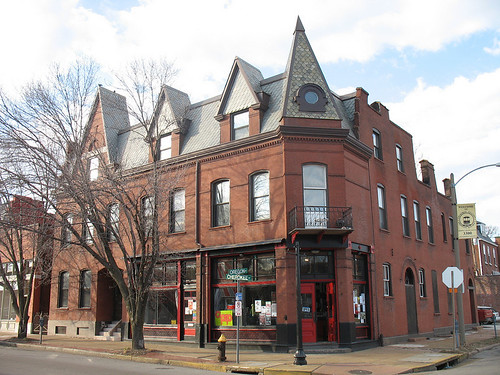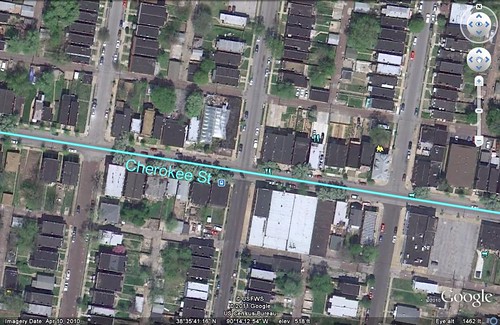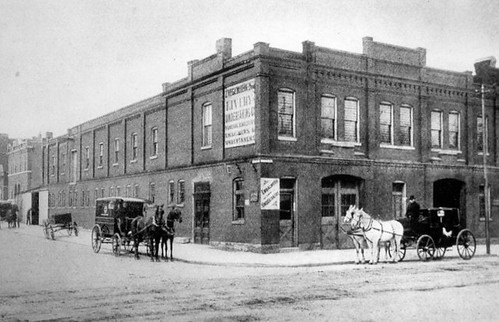The promising urban renaissance of Cherokee Street, St. Louis

Posted March 21, 2011 at 1:31PM
If you are interested in the revival of walkable in-town neighborhoods, Cherokee Street in St. Louis is one to watch. I love the brief “description” of Cherokee Street on the community’s Facebook page:
“Have you seen the future of Cherokee? What did it look like? Did you see an entertainment district? An Arts district? A Green district? Did you see more residences on the street? More trees? What kind of businesses do you see?”
The questions, not entirely rhetorical, suggest a neighborhood that it is open to change and possibility.
The Cherokee Street district appears in many ways to be so typical of disinvested inner-city neighborhoods that were abandoned in the 1960s and 1970s, much like its reawakening cousin on the other side of town, Old North St. Louis. Great historic building stock remains, along with a highly walkable street grid, decent transit connections, and a resilient population. And now, finally, we can see the beginnings of a comeback and glimpse the potential future. A work in progress, but one ripe with potential.
The neighborhood’s renaissance is not, to this point, assisted by master planning or government investment but, rather, is homegrown. Steve Patterson writes in Urban Review STL:
“What is great about Cherokee is that the rebirth is very organic. There was no grandiose plan, no multi-block project. Building by building the area is coming back. Collaboration among the individuals and entities has been important but that is different than a big physical project. In places where you have strong urban context intact all you need are measures to ensure the urban/walkable building fabric remains — no razing a block for a drive-thru. In those parts of the city where the urban fabric has already been lost
you need good form-based codes to guide new construction so you eventually end up with good walls along the streets. With good zoning in place, the infill can also happen organically over time.”
Patterson understands his urbanism.
So does Rick Bonasch, who celebrates the “passionate, dedicated people working together to make the area a better place to live and work,” but also cautions that challenges remain. Writing in STL Rising, he notes that the central city of St. Louis continued to suffer population loss in the 2010 census, suggesting that persistent problems with vacant land and a faltering public school system will linger. There are concerns about whether the upcoming redrawing of ward districts will lead to political change in Cherokee’s representation in the city government.
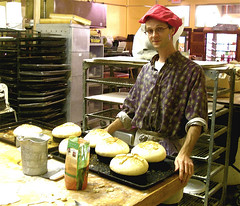 Still, the neighborhood’s future remains promising. The Cherokee Station Business Association claims over 50 independently owned and operated businesses in the district, from ethnic restaurants and shops catering to the area’s Latino population to music clubs, galleries and a worker-owned collective bakery. (See some photos of them here.)
Still, the neighborhood’s future remains promising. The Cherokee Station Business Association claims over 50 independently owned and operated businesses in the district, from ethnic restaurants and shops catering to the area’s Latino population to music clubs, galleries and a worker-owned collective bakery. (See some photos of them here.)
One group that will do its part in supporting reinvestment and inclusive empowerment is CAMP, the Community, Arts, & Movement Program, created eight years ago “to empower creative expression, celebrate interconnection, and promote healthy living in order to nourish a sustainable Cherokee neighborhood, and beyond.” A collaboration of seven non-profit organizations now with its own building, CAMP hosts an affordable housing cooperative, a community center highlighting green building practices, an artist-in-residence program, cultural exchange meetings, city gardening assistance, bike workshops, holiday festivals, and more.
There is a fabulous online discussion about the neighborhood and the possibilities for its future on the Cherokee Street News web site. Juan Montana, who initiated the conversation, argues that the neighborhood would benefit from more rental properties that could increase its population’s critical mass in order to support a thriving business district. Other community members add perspective to the discussion on such subjects as home improvements, live/work accommodations, 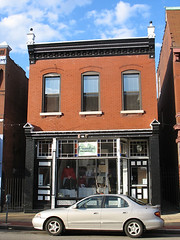 arts-oriented businesses, and the relationship of the neighborhood to others nearby and the city at large. One writer points out that Cherokee is right next to the parts of St. Louis that have been growing, not losing, population. I recommend the conversation for a good sample of what one might call “grassroots urbanism” in progress.
arts-oriented businesses, and the relationship of the neighborhood to others nearby and the city at large. One writer points out that Cherokee is right next to the parts of St. Louis that have been growing, not losing, population. I recommend the conversation for a good sample of what one might call “grassroots urbanism” in progress.
The Cherokee Street News is a great resource for learning about the neighborhood, as is a treasure trove of photos (some of which you see here) on the Cherokee Street Photos site. From afar, I have to admire both what the community appears to have to work with and the commitment of its residents to continue the progress. If this post happens to reach any of those involved, please leave a comment and let us know how you think it’s coming along.
Move your cursor over the images for credit information.
